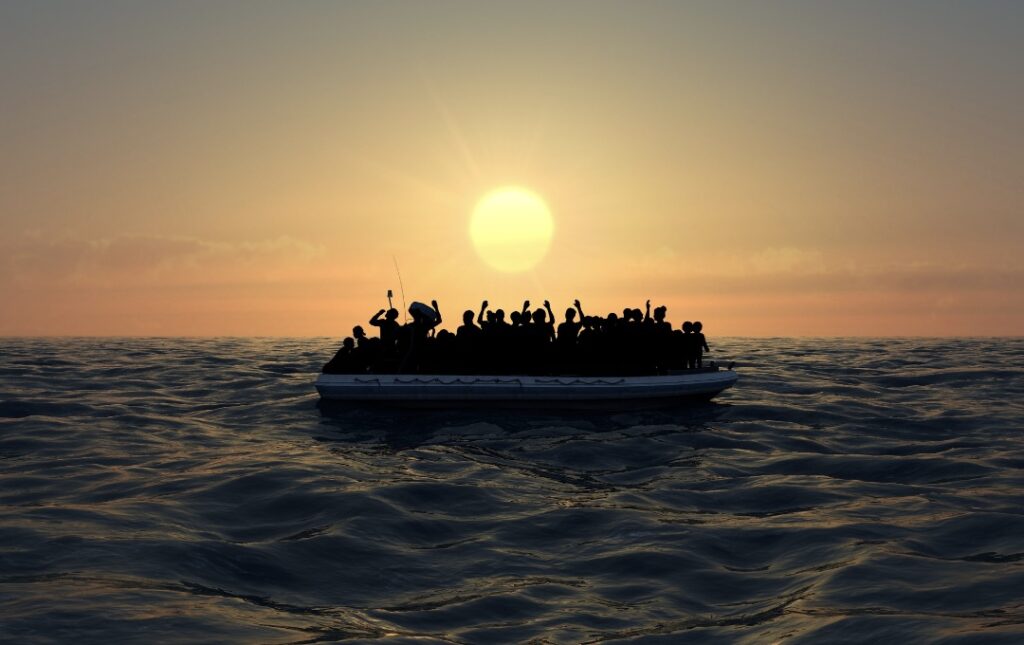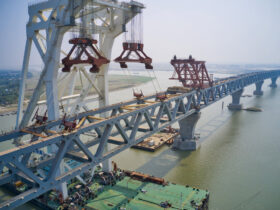Every day, there seems to be a new story regarding the influx of migrants entering different European Union (EU) countries. This so-called migrant ‘crisis’ has been analyzed by experts to understand whether it is caused simply by an abundance of new migrants, or whether it is a systematic failure of the EU. The migration crisis itself consists of any problem that arises from a large movement, or migration, of a population from one state to another.
However, it is important to address the difference between a migrant and a refugee. The term “migrant” refers to a person who moves to a new place, either to work or to have a better quality of life. A refugee is a person fleeing imminent danger in their homeland and who must escape to avoid persecution, whether political, ideological, religious, etc. Migrants and refugees are both subjects of analysis of migration crises, as the migration systems and policies put in place by nations and regions are often used for the migration of migrants and refugees.
Since the two types of systems that apply to different types of migrants sometimes intertwine, many people blame the system put in place by the EU for any fault or problem related to the citizenship of new migrants or the acceptance of refugees. Although this may be true in a small number of circumstances, it is clear that new cases of migrants in the European Union are caused by a migration crisis, rather than a European crisis, due to the increase in conflicts resulting in displacement and a lack of infrastructure in specific regions of the world.
Increased Conflicts
The news seems to constantly reveal a new conflict occurring in some part of the world. Not only are these conflicts occurring more regularly, but they are continually displacing people; many displaced communities try to migrate to the EU to escape the conflict and enjoy a better quality of life. According to the United Nations High Commissioner for Refugees (UNHCR), the total number of people worldwide who were forced to flee their homes at the end of 2021 was 89.3 million. This is more than double the 42.7 million people who were still forcibly displaced ten years ago and the most since World War II.
The United Nations took the initiative to research the exact reasons for this increase in wars and conflicts and found that the main reasons were “unresolved regional tensions, a collapse of rule of law, absent or co-opted state institutions, illicit economic gains and resource scarcity exacerbated by climate change.” Of course, many people from these conflict zones can afford to enter the EU through the ‘normal’ immigration system to obtain full citizenship, but this is not the case for the majority of people fleeing these conflicts.
As more and more people are forced to flee their homes, growing numbers of people are arriving at EU borders, contributing to the migrant crisis. So, in cases where there are fewer jobs or resources available in a European country, this is usually simply due to the state’s sudden increase in population rather than a “failed” migration system set up by the EU. It would be difficult for any nation to organize, let alone an entire region of the world, the accommodation of millions more civilians without running into some conflicts, and therefore being viewed as having a system failure by the rest of the world.
It is also important to take into account the previously mentioned factors for the increase in conflicts and wars. If we want to prevent migration crises from happening, it is essential to look at these factors and address them from their root causes, rather than trying to make a system work around them. This highlights the fact that any migrant-related crisis is mainly caused by the increase in the number of migrants, rather than an absolute failure of the EU to welcome everyone.
Lack of infrastructure
Another cause for the increase in migration to the EU is the lack of infrastructure in many parts of the world. For this reason, many people leave their home country for better education, careers and opportunities (which is also known as brain drain) as their own nations do not have the proper infrastructure for multiple schools, hospitals, or work buildings. The World Population Review found that some typical brain drain countries include countries in Africa, Central America and the Caribbean. One reason why many of these mentioned regions and countries experience this phenomenon is usually due to the lack of well-established schools and universities, low incomes and lack of common infrastructure such as roads, hospitals, etc.
Likewise, these countries are currently undergoing an increase in population. According to the Pew Research Center, the countries currently contributing the most to global population growth are India, China, Nigeria, Indonesia, Pakistan and D.R. Congo. It is clear that if the main countries that produce migrants to other parts of the world, in particular the EU, due to brain drain are the same countries that are experiencing the highest growth in birth rate, then there are no signs of the migration crisis abating.
There are many reasons behind this increase in population in these countries, such as an agriculture-based economy that relies on large families, reduced access to education, gender inequality, child marriages, children, etc. If we want to solve the migration crisis, it is necessary to start at the root of the problem, including the lack of infrastructure in many developing countries.
Whether people migrate from Africa to the EU or from one EU country to another, there will always be a migration crisis. Not primarily because of the system put in place by the EU, but simply because the world’s population is growing at an exponential rate and our reserves and resources cannot keep up, which is a phenomena known as carrying capacity. It makes no difference to attack the EU and the migration system currently in place when the situation will only get worse if no funding or infrastructure is put in place.
Ukraine Crisis vs. Syrian Refugee Crisis
One comparison that many scholars make to promote their position that this is a European crisis rather than a migration crisis is how the EU has handled the Syrian refugee crisis versus the Ukrainian crisis. Before continuing, it is important to take note of the Dublin-II Regulation, which stipulates that an asylum seeker’s request must be analyzed by a single Member State, this State being the first EU State in which the applicant enters. This regulation has created a lot of hostility within the EU, which these academics are also using to prove that this is a European crisis, since EU border states are forced to deal with the demands of the majority of candidates and are very overwhelmed, especially during periods of conflict resulting in travel abroad.
Additionally, the country that receives the most applicants changes for each unique crisis as there is a certain bias depending on the member state and people displaced from their own states are aware of this. For example, 92.8% of Syrian refugees were accepted in Italy for asylum, while 0% were accepted in Czech, which led to the majority of asylum seekers to arrive in Italy as the first Member State. During the 2015 refugee crisis, Angela Merkel said the Dublin principle for Syrian refugees would be temporarily suspended in Germany to avoid a backlog of asylum applications.
The EU as a whole (with the exception of Hungary, the Czech Republic and Poland for sovereignty reasons) introduced the “Emergency Relocation Programme” which relocated 160,000 refugees from areas of war in Greece and Italy to other Member States. They further improved relations with Turkey to reach better cooperation and an agreement to place some of the refugees in the country so that the EU does not have to accept all the refugees itself.
Meanwhile, the “situation” of Ukrainian refugees has been treated quite differently, ruling out how the EU calls it a situation rather than a crisis. During this situation, the EU introduced the Temporary Protection Directive of 2001 for the first time. Temporary protection is a tool which the EU introduced in 2001 and which can be used to respond to a large influx of displaced persons from non-EU countries who cannot return to their country of origin due to a current threat of danger.
Similarly, almost everyone who showed up at EU borders declaring they were Ukrainians was immediately granted asylum and did not have to go through the typical process as Syrian refugees did. In addition, those granted asylum received one-year residence permits, which included access to employment, medical services, education, social protection and housing. There are many reasons and opinions as to why the EU treated the two different situations differently, such as race, historical connection, and the under-lying nature of the conflicts. However, one of the main reasons is primarily due to the proximity of the conflicts. Syria is much further from the EU, while Ukraine is right next door, which may have given the EU the feeling of having a bigger stake in the Ukraine/Russia conflict.
Even though the EU and its asylum systems that it had/has put in place have their flaws and weaknesses, they still cannot be singled out as the main cause or contributor to the expansion of migration. These crises have been caused by conflicts in other parts of the world and the EU has accepted as many migrants as possible with the resources at its disposal, proving, once again, that it is more about migration crisis than a European crisis.
To conclude, the majority of migration problems in the EU are caused by a migration crisis and not by a European crisis; this is mainly due to an increase in migrants more than ever before, both due to an increase in conflict and a lack of infrastructure in other states. It is impossible to completely solve migration problems without first understanding the causes of migration crises and what states need to solve them. Whether migration crises are due to migrant or refugee issues, no one should ever fear that they will not be able to move to have a better quality of life, and the EU has done a relatively good job considering the resources at its disposal. to guarantee this possibility. To solve migration issues, it is important to start at the root of the problem, such as lack of infrastructure systems and unstable governments, and improve the quality of life of countries around the world in order to avoid this mass migration to a single region of the world that we are currently experiencing. This is not to say it will be easy, given that many states are struggling with internal and external conflict, but it is much easier to tackle the problem now, knowing that the focus should not be on the EU, but rather on the states from which the migrants come.









